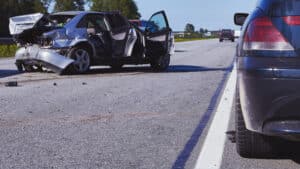Written By Chris Dolan
This week’s question comes from Jared from San Francisco: E-bikes are taking over the streets. I see more and more every day. Do you need to get a special license to ride one, like a motorcycle? And do you need insurance to ride one?
Thank you for the questions about e-bikes, Jared.
Electric bicycles have become a common form of transportation in the San Francisco Bay Area. It is valuable to know what e-bikes are and what the law is regarding the use of e-bikes.
An electric bike (e-bike) is a bicycle with an electric motor that assists the propulsion of the bike instead of being propelled solely by the pedaling of its rider as with a traditional bicycle. There are a variety of e-bikes that differ in operation and power of the motor. In California, e-bikes’ motor must be less than 750 watts. If the motor is over 750 watts it will qualify as a motor driven cycle and have requirements similar to a motorcycle.
In 2015 AB-1096 was passed by the California legislature. This law sets forth three classifications (Class 1, 2 and 3) of e-bikes based upon their maximum speed, propulsion assistance by the motor, and method of operation.
- Class 1: A class 1 e-bike is a low-speed pedal-assisted electric bicycle. Class 1 e-bikes are equipped with a motor that provides assistance only when the rider is pedaling, and that ceases to provide assistance when the bicycle reaches the speed of 20 miles per hour.
- Class 2: A class 2 e-bike is a low-speed throttle-assisted electric bicycle. Class 2 e-bikes are equipped with a motor that may be used to propel the bicycle without pedaling, and that is not capable of providing assistance when the bicycle reaches the speed of 20 miles per hour.
- Class 3: A class 3 e-bike is a speed pedal-assisted electric bicycle. Class 3 e-bikes are equipped with a motor that provides assistance only when the rider is pedaling, and that ceases to provide assistance when the bicycle reaches the speed of 28 miles per hour, and equipped with a speedometer.
E-bike riders must follow the rules set forth in California vehicle code. Some general rules to remember are:
- Pedestrians have the right of way. This includes pedestrians in and out of a crosswalk; bike riders are required to yield to pedestrians.
- Riders are required to stop behind crosswalks, leaving them clear for pedestrians.
- E-bike riders must stop at stop signs and obey traffic lights just like motor vehicles.
- Reflectors and a front white light are required by law at night time.
- Class 3 e-bikes are prohibited from Class 1 multi-use bike paths such as hiking or recreational trails.
- Class 3 e-bike riders must be over the age of 16 and wear a helmet.
California state law and vehicle code sets forth most of the rules regarding e-bikes, but local ordinances also impact how e-bikes can be used. In San Francisco it is illegal to ride on the sidewalk if you are over the age of 13. Also, in San Francisco riders must keep at least one ear open and free from any headphones or other devices that can cause distraction. You must leave one ear free to ensure you can hear your surroundings.
When it comes to licensure and insurance, e-bikes are treated like bicycles rather than motorcycles. E-bike riders are not required to obtain any special licensure to operate them. As of 2017, all e-bikes in California are required to have a label that describes its type, top assisted speed, and motor wattage. This can be used to identify what class of e-bike is being operated. It is also unlawful to tamper with or alter an e-bike’s speed capabilities without replacing the label on the bike that specifies what the speed capabilities are.
E-bikes are not treated as motorcycles in California and therefore liability insurance is not required. As we mentioned above, an e-bike motor is less than 750 watts, if a bike’s motor is over 750 watts the bike is classified as a motor driven cycle and will require insurance and licensure similar to a motorcycle.
Some insurance company policies may cover injuries from accidents involving e-bikes. Base policies will generally not specifically cover accidents involving e-bikes but will cover personal injury accidents. This can leave some room to get financial compensation even if you or the other party doesn’t specifically have e-bike insurance. If you want to know the details of e-bike insurance available to you, you should contact your insurance agent or a skilled accident attorney to discuss what coverage is available under the circumstances.
With a growing population of e-bike riders in the Bay Area it is important to stay vigilant and safe on the road. If you are ever in an accident with a bicycle, make sure your attorney knows the difference in e-bike classifications and what rights and responsibilities motorists and bicyclists have under California Law. Be safe out there, thank you for writing in with your questions.










